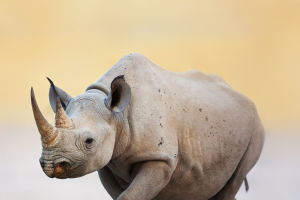The Red-crowned Crane (scientific name: Grus japonensis) is a large wading bird of the genus Grus in the crane family. Its body length is between 120 and 160 centimetres.
The neck and legs are long, and the body is mostly white. The top of the head is bright red, the throat and neck are black, and the ears to the headrest are white. The feet are black. When standing, the neck, tail feathers, and feet are black. The top of the head is red and the rest is white. When flying, only the secondary and tertiary flight feathers, the neck, and the feet are black; the rest are white. This makes it very distinctive and easy to recognize. Young birds have brownish heads and necks, and their body feathers are white and decorated with chestnut.
They are often found in pairs or family groups in small flocks. During the migratory season and in winter, they often form larger groups of several or dozens of family groups, sometimes clusters of up to 40-50, or even more than 100. However, the activity is still scattered into small groups or family groups in a certain area. At night, they roost in the shallows around the water or near reed ponds. They mainly feed on fish, shrimp, aquatic insects, mollusks, tadpoles, sandworms, clams, nail snails, and the stems, leaves, tubers, bulbs, and fruits of aquatic plants. They are found in northeastern China, eastern Mongolia, Korea, South Korea, and Hokkaido, Japan.
Grus japonensis was named by the German zoologist Philipp Ludwig Statius Müller in 1776. Müller had taught natural sciences in Erlangen, and from 1773 to 1776 he translated and published Linnaeus' famous book "Systema Naturae" and published some newly named species.
The creatures named this time included the crane. The year 1776, when Mueller named the crane, was the first year of the United States. In China, it was the forty-first year of Emperor Qianlong of the Qing Dynasty. In Japan, it was the fifth year of Emperor Anaga's reign.
It was the time of the closing of the country. At that time, Westerners could only know China from Guangzhou and Japan from Nagasaki. The cranes migrated southward from the northeast of China without passing through southern China but took Kyushu and Honshu in Japan as their wintering place.
Therefore, Westerners can only see this animal through Japan. They named it "Japanese Crane".
In the late 19th and early 20th centuries, the Japanese crane became extinct on Honshu Island. Some zoologists believe that this species became extinct in Japan. The English common name was changed from Japanese Crane to Manchurian Crane, and there has been some confusion over the co-existence of the names Japanese Crane and Manchurian Crane.
As a result, Archbold, former president of the International Crane Foundation, proposed changing the common name of the crane to Red-crowned Crane.
Whooping cranes require clean and open wetland environments as habitats. It is the most sensitive indicator organism to changes in the wetland environment. Due to the increasing population, the habitat of the crane is changing to farmland or cities.


